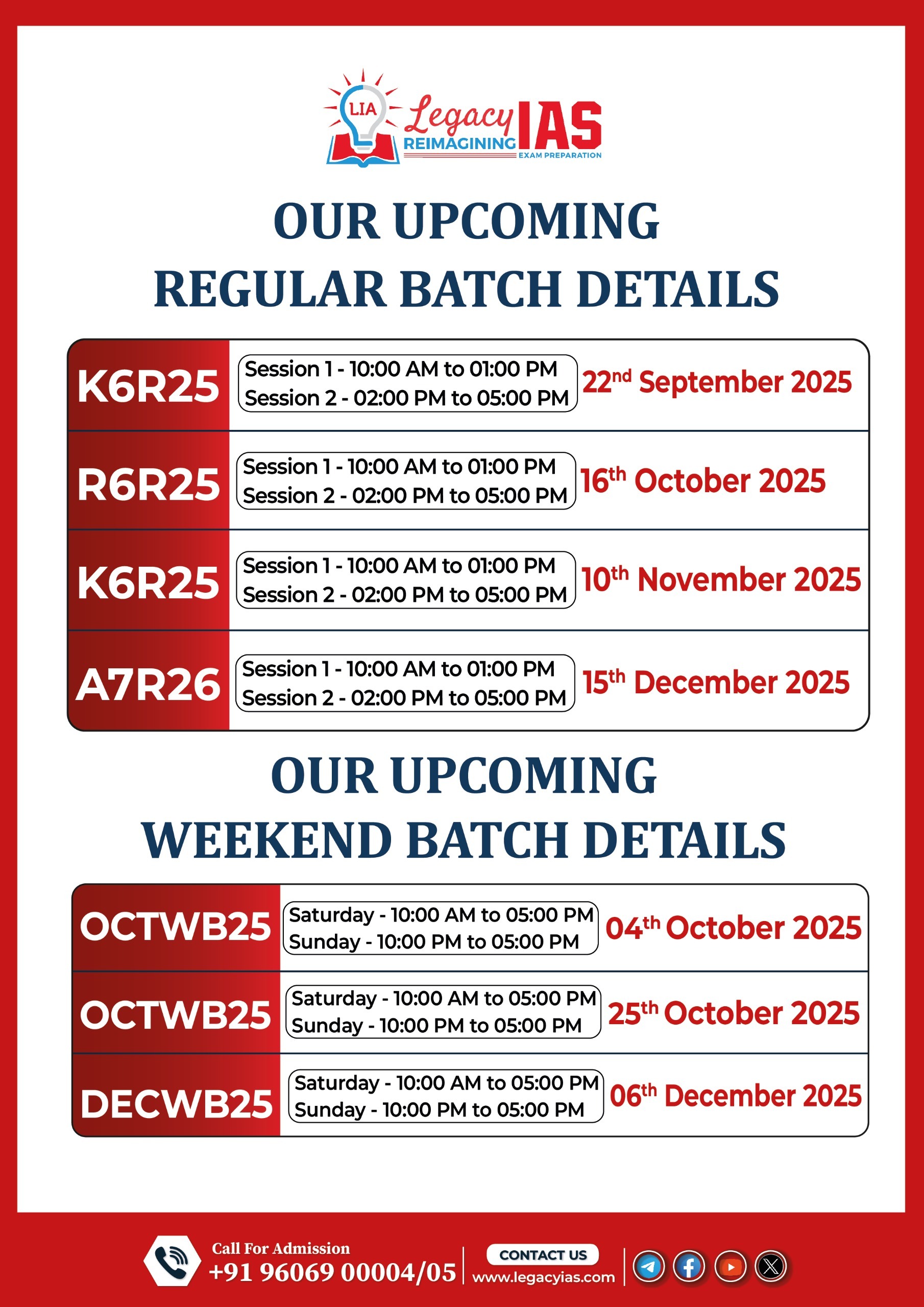Why in News?
- The Government of India is set to conduct the first-ever Household Income Survey (HIS) in 2026 to directly capture income data from Indian households — unlike previous surveys which relied on proxies like consumption or employment data.
- It aims to provide granular, policy-relevant details into income levels, distribution, class dynamics, and livelihood patterns across India.
Relevance:
• GS-3 (Economy): Enhances precision in income-based poverty estimation, inequality mapping, and welfare targeting through direct household income data.
• GS-2 (Governance): Strengthens evidence-based policy formulation and social sector planning under MoSPI and NSO.
• GS-3 (Inclusive Growth): Facilitates better DBT targeting, financial inclusion, and income-linked welfare metrics.
• GS-3 (Statistics & Data Governance): Modernises India’s statistical architecture by integrating HIS with HCES and NDAP for data transparency.
Context & Need
- Data gap: India lacks a comprehensive, nationally representative dataset on household income.
- Existing surveys’ limitations:
- Periodic Labour Force Survey (PLFS) – focuses on wages & employment, not household-level income.
- Household Consumption Expenditure Survey (HCES) – infers income via expenditure; less accurate for inequality or savings estimation.
- RBI Consumer Confidence Survey – measures sentiment on income trends, not actual data.
- Policy vacuum: Reliable income data are vital for designing targeted welfare schemes, poverty estimates, and inequality mapping.
Objectives of the 2026 Survey
- To directly measure household income — from all sources (salaries, self-employment, agriculture, pensions, transfers, etc.).
- To map the relationship between income and household characteristics — occupation, caste, gender, region, and assets.
- To understand income volatility, indebtedness, and loan repayment burden in an EMI-driven economy.
- To test claims like “Doubling Farmers’ Income” and evaluate outcomes of state and central welfare schemes.
Survey Design & Methodology
- Conducted by: National Statistical Office (NSO) under the Ministry of Statistics and Programme Implementation (MoSPI).
- Scope: Urban & rural households across all states/UTs.
- Data modules:
- Income – Salaries, allowances (bonus, overtime, stock options, leave encashment), self-employment earnings, crop sales, etc.
- Expenses – Seeds, raw materials, rents, repairs, and maintenance (mirroring HCES structure).
- Transfers & Support – Pensions, remittances, alimony, and welfare receipts (e.g., Kalaignar Magalir Urimai Thittam in Tamil Nadu).
- Assets & Liabilities – Property ownership, landholding, dwelling size/type, loans, interest payments.
Pilot Survey Insights (August 2025)
- Pilot coverage: Randomly selected households nationwide.
- Key findings:
- ~95% respondents found questions on income “sensitive.”
- Refusal rate highest for income-tax related questions.
- Affluent households more reluctant; rural households needed fewer clarifications.
- Respondents often overstated expenditure or underestimated savings/interest income.
- Government response:
- Awareness drives, media outreach, and local-language enumerators.
- Considering self-compilation forms for gated and affluent communities.
Expected Outputs
- Granular income mapping by:
- Sector – agriculture, manufacturing, services.
- Region – urban vs rural, state-level disparities.
- Social group – caste, religion, occupation.
- Economic indicators generated:
- Gini coefficient for income inequality.
- Income-to-loan repayment ratio.
- Income–consumption correlation and profit margins for self-employed.
- Gender gap in income by employment category.
- Enables micro-level poverty mapping beyond consumption-based estimates.
Policy Significance
- For Government:
- Empirical foundation for Direct Benefit Transfer (DBT) targeting, tax reform, and social security design.
- Enables district-level income data, improving NITI Aayog’s SDG localization and state welfare prioritization.
- For Researchers:
- Fills critical data gap for income inequality studies (replacing proxy datasets like CMIE-CPHS).
- Allows integration with HCES for comprehensive welfare analysis.
Challenges & Limitations
- Privacy concerns: Reluctance to share income/tax details.
- Recall bias: Respondents unable to remember exact income sources or asset returns.
- Data accuracy: Misreporting, underestimation of informal sector income.
- Enumerator training: Ensuring sensitivity, accuracy, and uniformity across diverse contexts.
- Affluent households’ participation: Requires alternative digital/self-reporting mechanisms.
Way Forward
- Strengthen trust via local enumerators, digital anonymity, and awareness on data use.
- Triangulate data with tax, EPFO, PM-KISAN, and GSTN databases.
- Synchronize HIS with HCES (2025–26) to cross-verify consumption–income dynamics.
- Institutionalize periodic surveys (every 3–5 years) for trend monitoring.
- Integrate with National Data & Analytics Platform (NDAP) for open-access insights.
Key Takeaway
The Household Income Survey, 2026 marks a paradigm shift from proxy-based welfare estimation to direct income measurement, aiming to equip India with the most precise picture of household economics since Independence — vital for inclusive, data-led governance.



